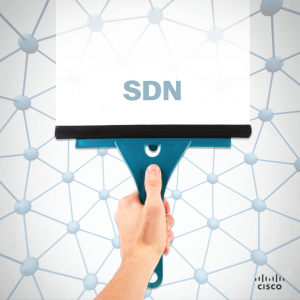
 Software Defined Networks (SDN) has its roots in academia, with research around wiping the networking slate clean. Its purpose is “to explore what kind of Internet we would design if we were to start with a clean slate and 20-30 years of hindsight“. The lessons learned there are valuable, not only for academia but for organizations of all sizes.
Software Defined Networks (SDN) has its roots in academia, with research around wiping the networking slate clean. Its purpose is “to explore what kind of Internet we would design if we were to start with a clean slate and 20-30 years of hindsight“. The lessons learned there are valuable, not only for academia but for organizations of all sizes.
The unforeseen complexity we’ve introduced into networking over the last 30 years makes our jobs more difficult and networks more complex and less efficient. The decisions that lead to this state were well-intended and prioritized to address the business needs at the time. For example, an autonomous and distributed control-plane provided high-availability and survivability. In hindsight, this same approach leads to many points of management a network architect is required to address when implementing other functions mandated by the business (QoS & multi-tenancy to name just two).
Unfortunately, for the vast majority of network architects, we’re not able to simply flick a switch and start a new wholesale networking paradigm. The good news is that the various technologies and approaches to redefining how networking is done allow us to maintain what works with those areas where there can be a “better way”.
In a series of blog posts, we will explore the real-world implementations and solutions being delivered under the catch-all SDN umbrella as they apply to enterprise networks including:
– Device & network programmability thru API’s such as Cisco OnePK
– Centralization of network control using SDN Controllers such as Cisco XNC
– Orchestration of the complete lifecycle of network services
– The role OpenFlow and other emerging protocols
– Overlay technologies and the virtualization of networking functions
We will also discuss the business and technology benefits of each solution when deployed into the existing networks.
The promise of SDN is real but confusion exists due to the plethora of protocols, products and solutions flooding the marketplace. Add to that the diverging requirements of enterprise, data center and service provider networks and it is no surprise that it is not possible to get a 140-character definition of what SDN means.
Cisco’s ONE strategy to SDN is to be inclusive of all kinds of networks. It is inclusive of multiple next-generation networking protocols. And most importantly for the vast majority of customers eager to adopt SDN technologies, they can reap the benefits with the networking equipment they have in their networks today.
What questions do you have about SDN? Let me know in the comment section below!